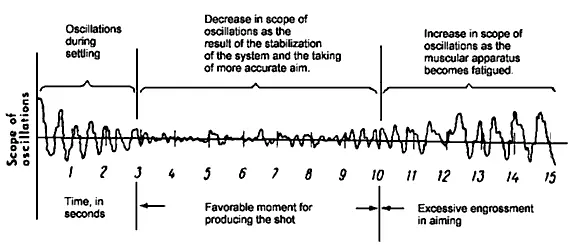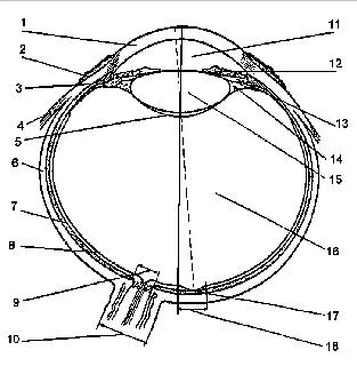The United States Army Marksmanship Unit Training Manual
The United States Army Marksmanship Unit has compiled this guide with the intent of providing assistance to pistol marksmen throughout the United States. Much of the information has been contributed by championship caliber U.S. Army pistol shooters and coaches. The text is designed for ready reference and contains the fundamentals of pistol marksmanship and the most advanced techniques known to these experts. The data presented represents a comprehensive coverage of the many facets of pistol marksmanship and related subjects. Portions of the information contained herein were obtained from the research of authoritative articles, personal interviews and observation of foreign competitions. Noteworthy contributions were received from many experienced persons closely associated with pistol activities not connected with military training.
This guide is dedicated to the individual marksman who is seriously interested in improving his performance in the art of pistol competition.
This publication was prepared in compliance with that portion of the mission of the United States Army Marksmanship Unit which requires the continuing improvement of training methods and techniques so as to raise the standards of pistol marksmanship skill in the United States Army.
The information published in this book is not for sale and/or resale for commercial purposes but is intended for furthering the aims and objectives of the civilian/military marksmanship programs being conducted in the United States.
Suggestions, criticism, or comments that will contribute to attaining these objectives are solicited and may be directed to the Commanding Officer, USAMU, Fort Benning, Georgia 31905.
STANLEY PARMENTIER
Colonel, Infantry Commanding
FUNDAMENTALS OF PISTOL MARKSMANSHIP
The fundamentals of pistol marksmanship embrace all of those physical factors essential to the firing of an accurate shot. Accuracy, in this sense, assumes that the weapon is zeroed, that a high degree of inherent accuracy exists in both the weapon and the ammunition, and that the firing is taking place under ideal conditions.
Essentially, accurate shooting with a pistol requires no elements other than those described in the following sentence: ALIGN THE SIGHTS PROPERLY ON THAT PART OF THE TARGET REQUIRED FOR YOUR GROUP TO CENTER IN THE TARGET AREA AND CAUSE THE HAMMER TO FALL WITHOUT DISTURBING THAT ALIGNMENT. All elements of pistol shooting such as position, grip, sight alignment, breath control, trigger control, physical condition, and psychology of shooting, when perfected, simply enables the shooter to perform the action described in the above key sentence.
In order for a shot to be accurate, it is first necessary to make sure that the pistol will be held as motionless as it is possible to do so during the time that the shot is being fired. The stance assumed by the shooter must provide the greatest stability possible for both the shooter’s body and the weapon.
To obtain a minimum arc of movement the shooter must give the pistol a definite stability of direction. Proper body position points the pistol directly toward the target with no tendency to drift or move to either side. Likewise, the vertical movement of the pistol is confined to the aiming area. Breathing is accompanied by the rhythmic movement of the chest, and in order to keep the pistol as immobile as possible the shooter must hold his breath for the length of time required to deliver an accurate shot. To obtain correct sight alignment, it is necessary for the shooter to grip the pistol in a manner which guarantees that he is holding the pistol firmly and that trigger pressure is applied straight to the rear. The delicate balance of sight alignment and minimum arc of movement can be easily disturbed if the trigger is activated in a manner which causes excess movement. However, since the shooter cannot achieve complete immobility when assuming the stance and position, the trigger has to be pressed during some movement of the pistol. In order to deliver an accurate shot within his ability to hold, the shooter must not only press the trigger evenly, but he must to so with correct sight alignment. The size of the shot group will, therefore, not exceed the dimensions of the arc of movement, provided the shot breaks as a surprise and no reflex action of muscles disturbs the delivery of the shot.
To help the shooter acquire the necessary knowledge to master all the factors that control his shooting we shall analyze In detail each separate element of accurate shooting - stance, position, grip, holding the breath, sight alignment, and control of the trigger. Also included will be certain methods of training that will accelerate the shooter’s development into a champion pistol shot. This status is achieved only after the shooter has mastered the technique of executing the fundamentals.
CHAPTER I. ATTAINING A MINIMUM ARC OF MOVEMENT
It is necessary during firing to press the trigger under varying conditions of pistol movement in conjunction with correct sight alignment. In order to apply coordinated pressure on the trigger, the shooter must wait for those very definite times when all control factors are optimum and firing conditions become favorable. The rule that must be observed as the first step in attaining control of your shooting is: “You must never attempt to fire until you have completely settled into a minimum arc of movement.”
In order to learn how to fire a shot at the proper time, the shooter must make analysis of the time needed to settle and the duration of the minimum arc of movement.
The entire system, consisting of the shooter’s body and the pistol, always undergoes a degree of movement. This is sometimes a pulsating, swaying or erratic arc of movement during aiming and firing a shot. The cause of this movement aside from conditions such as weather, is the action of the muscles maintaining the shooter’s body in a definite position. Other action such as blood pulsation, causes movement of individual parts of the shooter’s body and the pistol. The nature and extent of the arc of movement changes within the time being devoted to delivering a shot. For example, when the shooter is first getting his sight alignment and has not yet had time to settle his body and pistol, the extent of the movement is relatively great. As the body becomes balanced and the aiming is more precise, the arc of movement minimizes. After a certain length of time, the minimum arc of movement begins to increase, because the muscles begin to fatigue, and the shooter does not have enough air in his lungs to continue holding his breath. If we record the arc of movement, we will see a wavelike line with varying amplitude of oscillation (Figure 1-1).

Figure 1-1. Basic Scheme of Minimum Arc of Movement.
It is obvious that under such circumstances the shooter must begin his smooth pressure on the trigger while not devoting too much attention to the arc of movement as long as it remains at the minimum. Continue to apply pressure on the trigger and intensely concentrate on keeping the sights in alignment. The resulting five to seven second period is the most favorable time for firing an accurate shot.
Taking into consideration the direct relationship between accuracy of shooting and the degree of immobility of the pistol when the shot is being delivered, the marksman must give greatest consideration to the selection of a stance, a position, a grip, and a means of breath control which will guarantee the greatest stability to both the pistol and the body. The relatively small degree of movement thus obtained provides a stable foundation, permitting use of the other fundamentals.
Читать дальше













